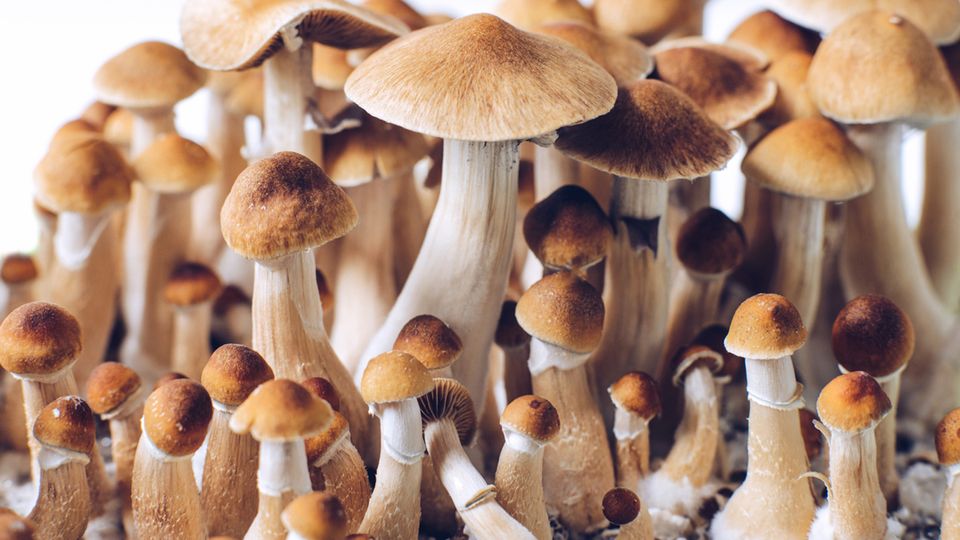Psilocybin May Relieve Depression Through “Disintegration” of Entrenched Brain Networks

Complete the form below to unlock access to ALL audio articles.
Psilocybin’s enduring antidepressant effects may be driven by changes to connectivity that free up brain networks, suggests a new study. The proposed mechanism of action may not be shared by traditional SSRI antidepressants.
Trial combination
The article, published in Nature Medicine, reanalyzed data from two separate clinical trials of psilocybin in depression.
The first was an open-label study, where brain imaging data was recorded from 16 patients with treatment-resistant depression (TRD). This is defined as a type of major depression where patients fail to respond to multiple antidepressant treatments. The authors also analyzed data from 43 patients who had enrolled in a randomized controlled trial (RCT) of psilocybin for major depression. In this study, patients were either treated with psilocybin (22 patients) or the SSRI antidepressant escitalopram (21) alongside a negligible dose of psilocybin.
In both trials, psilocybin produced rapid and sustained antidepressant effects. A similar effect has also been seen in several other trials. Nevertheless, the mechanism of action that causes this long-lasting therapeutic benefit has remained elusive.
The authors of the new paper, a team from Imperial College London, looked for a potential explanation in their cohort’s brain activity. The team analyzed the level of connectivity between various functional brain networks.
What are brain networks?
Modern neuroscience suggests the brain is composed of series of brain regions that together contribute to the performance of certain tasks. Interestingly, brain networks can consist of anatomically remote areas that are nonetheless well-connected between neural connections and which activate together. The default mode network, for example, includes part of the prefrontal cortex, the posterior cingulate cortex, which is found at the brain’s midline, and the angular gyrus, which is part of the parietal lobe,
.
Negative thought patterns
The two trials didn’t only differ in terms of their cohorts’ depression criteria, but in the timing of their imaging measures. In the open-label trial, functional magnetic resonance imaging (fMRI) was recorded before dosing and one day after the final dose was administered. In the RCT, fMRI scans were recorded at baseline and then three weeks after the final dose.
Despite these methodological differences, both trials showed similar effects of psilocybin on patients’ imaging data.
People with major depressive disorder (MDD) and TRD often have negative thought patterns that involve pessimism, rote thought patterns and cognitive inflexibility. These cognitive behaviors are often paired with particular patterns of brain activity. The default mode network (DMN) is a brain network that has been repeatedly linked to introspective, self-focused thought. In depression, the DMN becomes hyperactive. Other brain networks linked to depression include the salience network (SN) and executive network (EN).
These three brain networks have an additional level of significance for psychedelic therapeutics. They are highly enriched by 5-HT2A serotonin receptors, which are targeted by classical psychedelics such as LSD and psilocybin.
“Disintegration” of brain networks
A popular theory behind the actions of psychedelic compounds on the brain suggests that they engender the “disintegration” of these entrenched brain networks, with a corresponding breakdown of stereotyped and fixated thought patterns, leading to antidepressant benefits.
The authors hypothesized at the outset of their study that days and weeks after the acute effects of the psychedelics had worn off, these changes to brain connectivity would still be observable in their patients’ imaging data.
Effects on a modular brain
In their analysis of the open-label trial, the team noted that the reduction in their patients’ depression rating, as measured by a tool called the Beck’s Depression Inventory (BDI), correlated with a reduction in the modularity of their brain activity, a measure that estimates how segregated brain networks are.
In the RCT, the authors showed that while psilocybin decreased brain modularity, escitalopram didn’t have the same effect. Furthermore, a measure called dynamic flexibility was noted to increase in line with improvements to depression rating for patients given the psychedelic, but not the SSRI.
Despite this positive evidence, the paper was not free of inconsistency – specific changes to connectivity between the DMN, SN and EN noted after one day in the open-label trial were not replicated in the RCT, something the authors suggest might be due to the more severe type of depression involved in the open-label study.
In previous analyses of the open-label trial data, the primary clinical outcome measure was the 16-item Quick Inventory of Depressive Symptoms (QIDS-SR16) score. In the new paper, only BDI data was analyzed. It was unclear why the original QIDS-SR16 measure was not analyzed in the new paper and authors did not respond to a request for comment.
The authors ultimately conclude that their findings could represent a mechanism of action for the enduring effects of psilocybin, one that is unique to 5HT2A-targeting psychedelics.
While more research will be required, the authors hope that these imaging measures could prove to be reliable and robust biomarkers of a patient’s response to psilocybin therapy, a vital step in the journey towards the wider rollout of these potential treatments.
Reference: Daws RE, Timmermann C, Giribaldi B, et al. Increased global integration in the brain after psilocybin therapy for depression. Nat. Med. 2022. doi: 10.1038/s41591-022-01744-z




